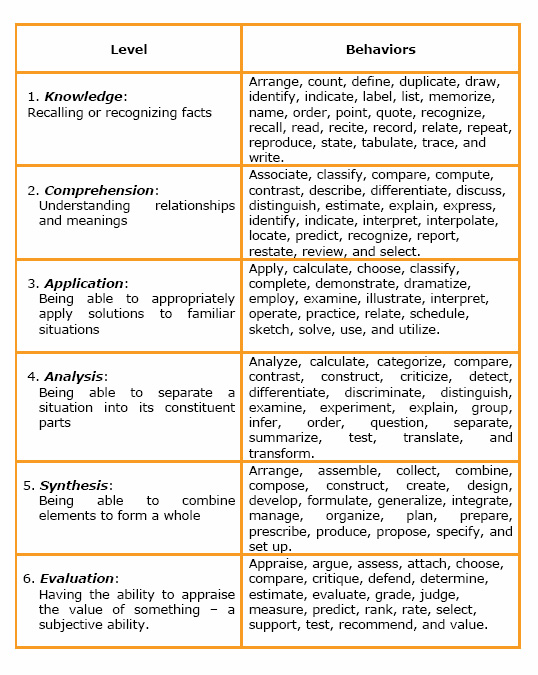Difference between revisions of "Learning Objectives"
From Learning and training wiki
| Line 65: | Line 65: | ||
=='''Job Aids'''== | =='''Job Aids'''== | ||
| + | [[Media:Developing_Learning_Objectives.pdf]] | ||
}} | }} | ||
Revision as of 16:22, 14 November 2008
| Clear statement about the outcome of a training course, which informs what the trainee will be able to do or know after the training. They are presented on the trainee’s perspective, expressing as a target the improvement of competencies, which will enhance job performance. The performance signals to the trainees what must be done or learned in very specific terms.
The learning objectives are the starting point of the development of a learning activity. They constitute an essential element in the preparation of a training course. The articulation of adequate learning objectives can be one of the most time-consuming tasks in training design. Even though they may be expressed in a single paragraph of a few lines they are the essential foundation of any training course as they relate to the overall training goal. Characteristics:
The initial statement (or bullet list) of the course learning objectives constitute the primary objectives (First Level). These first level objectives may have other objectives subordinated to them (Second Level Objectives), which are supporting or enabling objectives. The First Level Objectives give the trainees an overall guide to what they will accomplish in the course whereas the Second Level Objectives are more content specific, telling exactly what they need to do. First and second level objectives are particularly used when the course content is divided into modules or units. Thus, there will be an overall objective for the course (First Level) and other subordinated objectives in each one of the modules/units (Second Level) that support and directly enable the achievement of the overall course objective. In case modules/units are again divided into sections, these sections will also have learning objectives (third level), which are even more specific than the ones in the previous levels. [1] |
General Guidelines
Quick CheckWhen writing learning objective statements, ask yourself the following questions:
Job Aids |
References
- ↑ www.depts.washington.edu(18 March 2008), www.utmem.edu(18 March 2008); Hassel-Corbiell, Ribes, Developing Training Courses: a technical writer’s guide to instructional design and development, Learning Edge Publishing, 2006; Phillips, Jack J. & Stone, Ron D., How to Measure Training Results, McGraw-Hill, 2002; Piskurich, George M., Rapid Instructional Design – Learning ID Fast and Right, John Wiley & Sons, Inc., 2006; Reiser, Robert A. & Dempsey, John V., Trends and Issues in Instructional Design and Technology, Pearson Prentice Hall, 2007; Stolovitch, Harold D. & Keeps, EricaJ., Telling Ain’t Training, ASTD Press, 2002. Woolcock, Michael J.V., Constructing a Syllabus, The Harriet Sheridan Center for Teaching and Learning, Brown University, 2006.
- ↑ Hassel-Corbiell, Ribes, Developing Training Courses: a technical writer’s guide to instructional design and development, Learning Edge Publishing, 2006.


